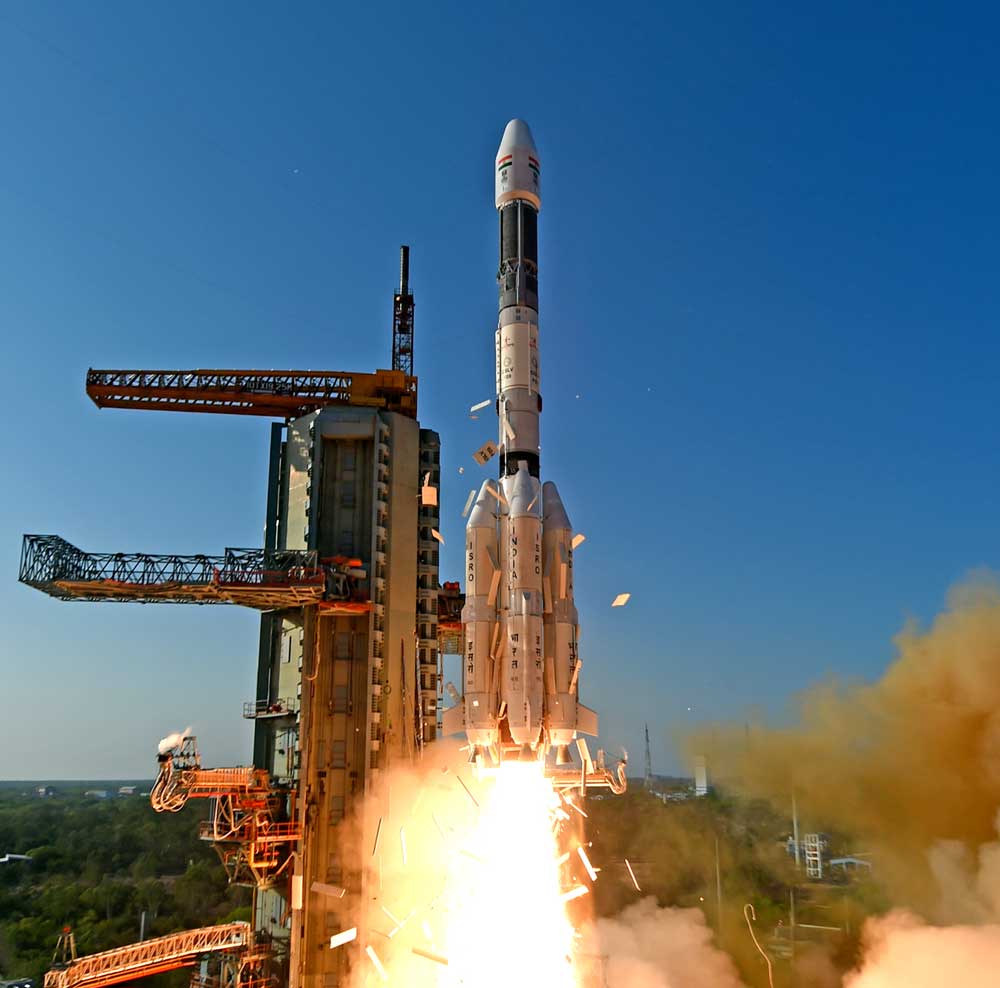

On June 5, 2017, the Indian Space Research Organisation (ISRO) GSLV-Mk III rocket successfully launched from the Satish Dhawan Space Centre, carrying the 3,136-kilogram GSAT-19 satellite to a geosynchronous transfer orbit.
With a mission life of 10 years, the GSAT-19 carries Ka/Ku-band high-throughput communication transponders as well as a Geostationary Radiation Spectrometer (GRASP) payload to monitor and study the nature of charged particles and the influence of space radiation on satellites and their electronic components. GSAT-19 also features advanced spacecraft technologies such as miniaturized heat pipes, fiber optic gyros, a micro electro-mechanical systems accelerometer, a Ku-band TTC transponder, and an indigenous lithium-ion battery.
